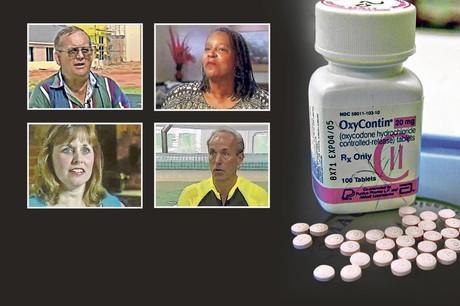If you fill out the "Forgot Password" form but don't get an email to reset your password within 5-10 minutes, please email logistics@ire.org for assistance.
 For more than a year, the Milwaukee Journal Sentinel has been investigating prescription drugs and the dangerous side effects of using opioids ot treat chronic pain. The latest installment of the series tracks the lives of chronic pain sufferers who praised the drug in a 1998 promotional video.
For more than a year, the Milwaukee Journal Sentinel has been investigating prescription drugs and the dangerous side effects of using opioids ot treat chronic pain. The latest installment of the series tracks the lives of chronic pain sufferers who praised the drug in a 1998 promotional video.
Gabler (who is also an IRE Board member) and Fauber shared some details on the reporting with IRE via email:
Where did the idea for the reporting come from?
"The Milwaukee Journal Sentinel began doing stories on the opioid epidemic as part of its ongoing Side Effects series in early 2011. So far, there have been four pieces. All of the stories involve conflicts of interest and focus on how pharmaceutical industry money has influenced the practice of medicine. A couple of the story ideas came from tips and a couple came from information that was discovered in the course of reporting."
What was the most interesting part of the reporting process?
"It was fascinating to track down the seven patients in this story and dig into what really happened to them. It was also important to explain how one video and the claims made in it related to the larger issue of the opioid epidemic in the U.S."
In order to get them to agree to interviews, we stressed the importance of informing the public about this issue. Eventually, we agreed to use only first names of three of the people."
We also used police reports and autopsy reports to find out more about the people who died. Tons of information is held in these reports, such as specific medication people were taking, the cause of their death, medical histories and family members’ contact information. It can sometimes be difficult to determine which medical examiners’ office, police department or sheriff’s department handled a case but you just have to keep calling around until you figure it out.
We also used reports from the Government Accountability Office, articles published in medical journals, and historical drug sales data provided by IMS Health." [a global provider of information, services and technology to the health care industry]
What tools did you use to organize your documents and data?
"Nothing fancy – mostly just Google documents. It was helpful to have a central location for interviews because two people worked on the project."
How did you locate your sources?
"We used various people-finding software or Web sites. Some people were easy to find – through Whitepages or a basic search. Others were more difficult and had to be tracked down through public records and more sophisticated software like Nexis or TLO, which link to possible family members. Finally, in some cases, family members’ contact information was listed in police reports."
After this experience, what advice can you offer fellow investigative reporters?
"This story is a good example of combining strong human interest elements with solid medical reporting. In addition to telling what happened to people in the video, we also paid a lot of attention to some of the myths and unsubstantiated claims that have been made about the safety and effectiveness of opioids as a treatment for long-term chronic pain.
For this story as well as our other opioid stories, the reporting pointed out financial relationships between drug companies and doctors, pain organizations and medical schools. In particular, we wanted to show how those relationships have affected the practice of medicine, sometimes to the detriment of patients."
What do you hope will change as a result of your reporting?
"The goal, as always, is to simply further inform people about this issue and help explain the dangers of these drugs."

Looks like you haven't made a choice yet.